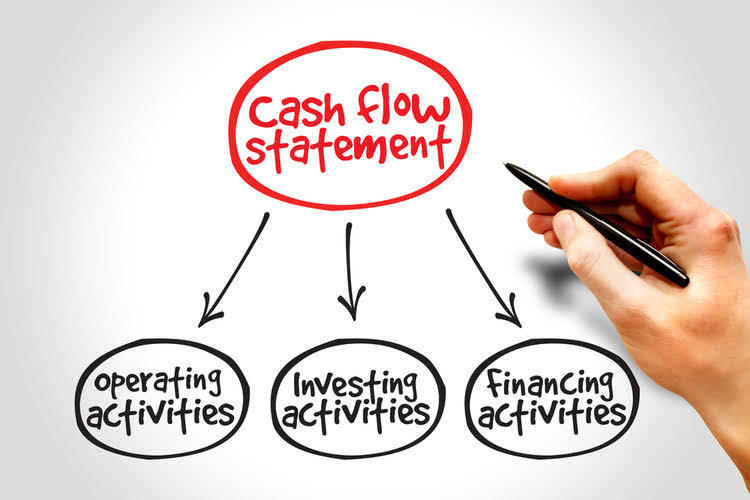What is Double-Entry Bookkeeping in Accounting?
Make sure you have a good understanding of this concept before moving on past the accounting basics section. For instance, if a business takes a loan from a financial entity like a bank, the borrowed money will raise the company’s https://www.digitalbusinessbenchmark.com/why-do-you-need-a-perfect-cv/ assets and the loan liability will also rise by an equivalent amount. If a business buys raw materials by paying cash, it will lead to an increase in the inventory (asset) while reducing cash capital (another asset).
- A current liability account that reports the amounts owed to employees for hours worked but not yet paid as of the date of the balance sheet.
- Double-entry accounting is a bookkeeping system that requires two entries — one debit and one credit — for every transaction.
- Just as assets are on the left side (or debit side) of the accounting equation, the asset accounts in the general ledger have their balances on the left side.
- The double-entry accounting method falls under the generally accepted accounting principles or GAAP .
- You will increase (debit) your accounts receivable balance by the invoice total of $107, with the revenue recognized when the transaction takes place.
On your general ledger, debits are always recorded on the left side of a T account and credits on the right. Whenever a debit is made to one account, a credit is made to another so that the debit balance equals the credit balance. At least one account will have an amount entered as a debit and at least one account will have an amount entered as a credit. Further, the total amounts entered as debits must be equal to the total amounts entered as credits.
How to record a journal entry
For example, if you sell a product on credit, your receivables increase, and your inventory decreases. If you don’t use double-entry accounting, your receivables will increase but you’ll be overstating your inventory. At year-end, it will look like you’d have more inventory on your books than you actually have on hand.
Did the first sample transaction follow the double-entry system and affect two or more accounts? Joe looks at the balance sheet again and answers yes, both Cash and Common Stock were affected by the transaction. As you can see, the entire accounting process starts with double-entry bookkeeping. Whether you do your own bookkeeping with small business bookkeeping software or hire a bookkeeper, understanding this critical accounting concept is essential for the success of your small business. If you debit a cash account for $100, it means you add the money to the account, and if you credit it for $100, it means you subtract that money from the account.
Verify your books with a trial balance
In short, a “debit” describes an entry on the left side of the accounting ledger, whereas a “credit” is an entry recorded on the right side of the ledger. Double-entry bookkeeping was developed in the mercantile period of Europe to help rationalize commercial transactions and make trade more efficient. It also helped merchants and bankers understand their costs and profits. Some thinkers have argued that double-entry accounting was a key calculative technology responsible for the birth of capitalism. The total amount of the transactions in each case must balance out, ensuring that all dollars are accounted for.
- You would debit (reduce) accounts payable, since you’re paying the bill.
- Taking the time to understand them now will save you a lot of time and extra work down the road.
- Single-entry accounting involves writing down all of your business’s transactions (revenues, expenses, payroll, etc.) in a single ledger.
- Joe looks at the total of $20,000 on the asset side, and looks at the $20,000 on the right side, and says yes, of course, he can see that it is indeed in balance.
- The modern double-entry bookkeeping system can be attributed to the 13th and 14th centuries when it started to become widely used by Italian merchants.
The total debit balance of $30,000 matches the total credit balance of $30,000. The debit entry increases the wood account and cash decreases with a credit so that the total change in assets equals zero. Double-entry accounting is the standardized method of recording every financial transaction in two different accounts. For each credit entered into a ledger there must also be a corresponding (and equal) debit. It can take some time to wrap your head around debits, credits, and how each kind of business transaction affects each account and financial statement.
Debit and credit accounts
Small businesses with more than one employee or looking to apply for a loan should use double-entry accounting. This system is a more accurate and complete way to keep track of the company’s financial health and how fast it’s growing. For example, a copywriter buys a new laptop computer for her business for $1,000. She credits her technology expense account for $1,000 and debits her cash account for $1,000. This is because her technology expense assets are now worth $1000 more and she has $1000 less in cash.
- If you can produce a balance sheet from your accounting software without having to input anything other than the date for the report, you are using a double-entry accounting system.
- The normal balance in such cases would be a debit, and debits would increase the accounts, while credits would decrease them.
- This article will cover the definition of credits and debits, what double-entry accounting is, and why it matters for your business.
- Joe can tailor his chart of accounts so that it best sorts and reports the transactions of his business.
- The likelihood of administrative errors increases when a company expands, and its business transactions become increasingly complex.
- Both sides of the equation increase by $10,000, and the equation remains balanced.
Whether one uses a debit or credit to increase or decrease an account depends on the normal balance of the account. Assets, Expenses, and Drawings accounts (on the left side of the equation) have a normal balance of debit. Liability, Revenue, and Capital accounts (on the right side of the equation) have a normal balance of credit. On a general ledger, debits are recorded on the left side and credits on the right side for each account. Since the accounts must always balance, for each transaction there will be a debit made to one or several accounts and a credit made to one or several accounts. The sum of all debits made in each day’s transactions must equal the sum of all credits in those transactions.
When you deposit the money, your cash account increases (debit) by $1,000, and your revenue increases (credit) by $1,000. Both Cash and Fixed Asset are asset accounts, so a credit represents a decrease in the account balance while a debit represents https://ahteam.org/releases.html?l=P an increase. But first, to understand how the double-entry system works, you need to understand the basic accounting equation. When entering business transactions into books, accountants need to ensure they link and source the entry.
Remember that example where you bought $5,000 of equipment for your business? Using double-entry accounting, with just a glance at your trial balance, you and your tax preparer would see a missing $5,000 in either the debit column http://www.isg-tour.ru/news/view/1148.html or credit column. Once you investigated and corrected the error, you can take advantage of that valuable tax deduction. So if you’re only tracking the balance in your bank account, you could be missing a big piece of the picture.





